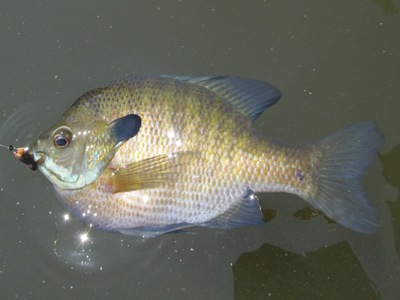Deep jigging can be a highly effective technique for catching bluegill and other species of sunfish. Deep jigging is usually done on lakes, reservoirs or along channel edges in rivers. Anglers use a variety of lures while deep jigging, including metal jigs, spoons, traditional panfish jigs, tandem jigs and other offerings. Lures used for deep jigging are often tipped with morsels of bait to increase strikes.
A quality fish finder can be extremely useful when deep jigging for panfish. Scouting areas with electronic fish finding equipment often allows anglers to detect schools of bluegill, shellcrackers, crappie or other panfish.
Fish finders not only indicate the presence of fish, but they also give anglers an idea of what depths the fish are suspended at. In some cases, electronics may also detect rocky bottoms, submerged trees, or other habitat that may be holding fish.
When using spoons, the countdown technique is popular for deep jigging. Anglers cast away from the boat and count as the lure sinks. A popular rule of thumb is that most small spoons or metal jigs sink about 1 foot per second. When the lure sinks to the depth where fish are believed to be, the angler begins slowly jigging the lure back towards the boat.
Deep jigging is known to be effective in late summer thru fall, when big bluegill and other species have left their spawning areas and taken up feeding positions in deeper water. This technique not only works in the warm season but also in winter when bluegill and other panfish stage in open areas.
